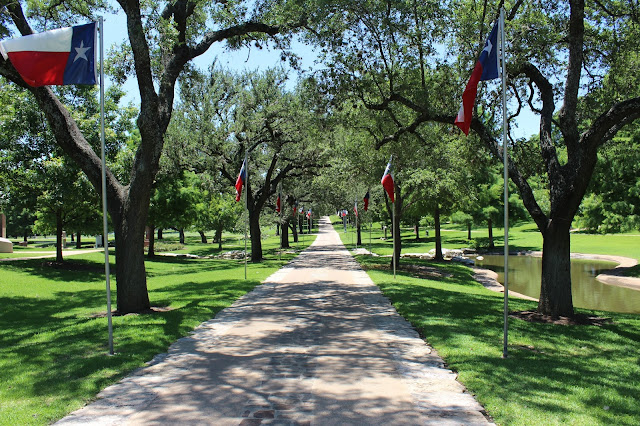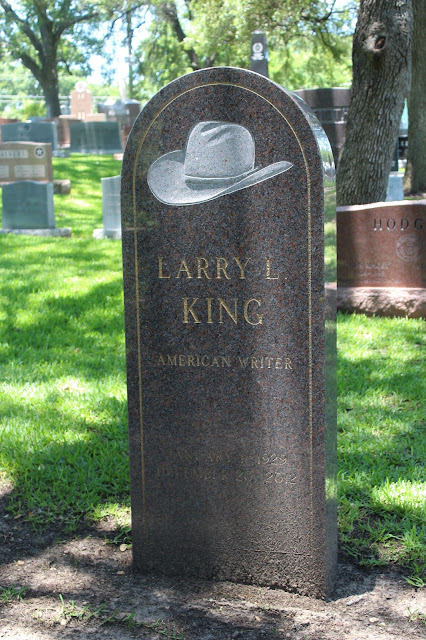On Tuesday,
July 26, I began the day with an opening address at a Texas history
teacher conference in Houston. That evening I delivered the keynote at
the annual joint meeting of the Tyler chapters of the Sons of the
Republic of Texas and the Sons of the American Revolution. By the time I
returned home that night I had driven more than 300 miles, while
delivering two Texas history programs. But both events were fine history
occasions which produced a most enjoyable day for the State Historian.
On
Monday afternoon I drove to Houston Aldine. Charles Nugent, Adult
Program Manager for the Texas State Historical Association, had arranged
a conference for Tuesday and Wednesday at a handsome new facility of
the Aldine ISD. These conferences stress content over methodology, and
offer needed professional development credit to participants, mostly
fourth- and seventh-grade teachers of Texas history. For four years I've
been privileged to provide programs at the TSHA conferences, and for
this one Charles Nugent arranged an especially fine lineup of
presenters.
 |
| Comparing the Spanish Chihuahua Spur to a pair of Texas Cowboy Lone Star Rowels |
 |
| Texas History Teachers Examining the Display Tables |
I
saw Charles on Monday afternoon at the Aldine ISD conference center.
Before going to my motel, I wanted to check in with him and get a feel
for the facility. My program was scheduled from 8:30 to 10 AM Tuesday,
following a welcome by Charles Nugent. I arrived early to set up my
props and to visit with participants. My program was an overview of
"Spanish Influence Over Texas." The recorded history of Texas covers
five centuries and Spain controlled Texas for the first three of those
centuries. Spanish influence over Texas thus is deep and has proved
long-lasting. It is a subject I lectured about for more than three
decades to my Texas history classes at Panola College, and it was a
pleasure to condense these lectures for the opening program at this
conference.
I
left for home at 10:30 AM and arrived three hours later, just a few
minutes before my youngest daughter and her family drove up from their
home at Van Alstyne. We visited for three hours before I changed suits
(in order to wear my Sam Houston tie) and gathered a new set of props
before heading to Tyler. Causby, Dusty and their two daughters began
some planned activities, while I drove to a Tyler restaurant to meet
with the Piney Woods Chapter of the SRT and the Captain William Barron
Chapter of the SAR. These are two of the top chapters in Texas of their
respective societies, and a number of men are members of both chapters.
 |
|
The joint session is introduced by SAR President Dave McLeod
(left) and SRT President Sam Hopkins.
|
For
this annual dinner meeting of these two chapters, wives are invited,
many of whom are members of the DRT and DAR. The spacious dining room
was filled with a fine-looking crowd of lively and patriotic men and
women. Following an excellent dinner there were impressive opening
ceremonies, led by chapter presidents Sam Hopkins (SRT) and Dave McLeod
(SAR). An award and commendation medal was presented to Fireman Matthew
Daniel.
 |
|
Britton Lee, SAR V.P. and Head of the award-winning SAR
color guard, presents a medal to fireman Matthew Daniel.
|
 |
|
State Historian introduction from John Merritt, who invited
me to this annual occasion.
|
For
this combined SRT/SAR meeting, I presented a program on Sam Houston.
His father was a combat veteran of the American Revolution, serving as a
young officer under Daniel Morgan. Young Sam absorbed
Revolutionary values from his father, and during the Texas Revolution
Houston fashioned his hat into the shape of a tricorn of the American
Revolution. By a delicious historical coincidence, Houston signed the
Texas Declaration of Independence on his 43rd birthday, March 2, 1836. I
emphasized the drama of the campaign of the spring of 1836: the
desperate "Runaway Scrape," General Houston's strategic retreat, and the
spectacular victory at San Jacinto. The crowd responded with
enthusiasm, and as I drove home afterward I reflected that this busy
Tuesday was one of the most pleasant and rewarding days of my four-year
tenure as State Historian.
 |
| Addressing the smiling crowd |

|
Chapter Presidents Dave McLeod and Sam Jenkins present me
with a Texas flag which flew over the State Capitol and a U.S. Flag which flew
over the National Capitol.
|
|
|









































